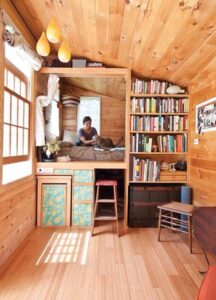Minimalism and multifunctional items play a critical role in Tiny House interior design. These principles are the basis for effective management of limited space. The minimalist approach focuses on meeting basic needs, avoiding clutter and clutter. Fewer possessions and open space enhance spiritual serenity, making the Tiny House more spacious, peaceful and inviting. At the same time, multifunctional furniture provides more function in limited spaces. For example, a sofa that can become a bed or storage units that can be used as a table.
These design principles also encourage energy and resource savings. Minimalist and multifunctional items not only fulfill basic needs, but also provide practicality by fulfilling multiple functions. Ultimately, these principles underpin the Tiny House lifestyle and ensure the most effective use of limited space, promoting a practical, aesthetic and sustainable lifestyle.
I hope you find this article informative and useful. If you like it, please don't forget to share it to raise awareness for more people. If you do not want to follow haosBlog frequently, you can sign up for our e-newsletter list with your contact information so that we can remind you. Stay with love.
Ayşe Zülal Çakıcı
Interior Architect





